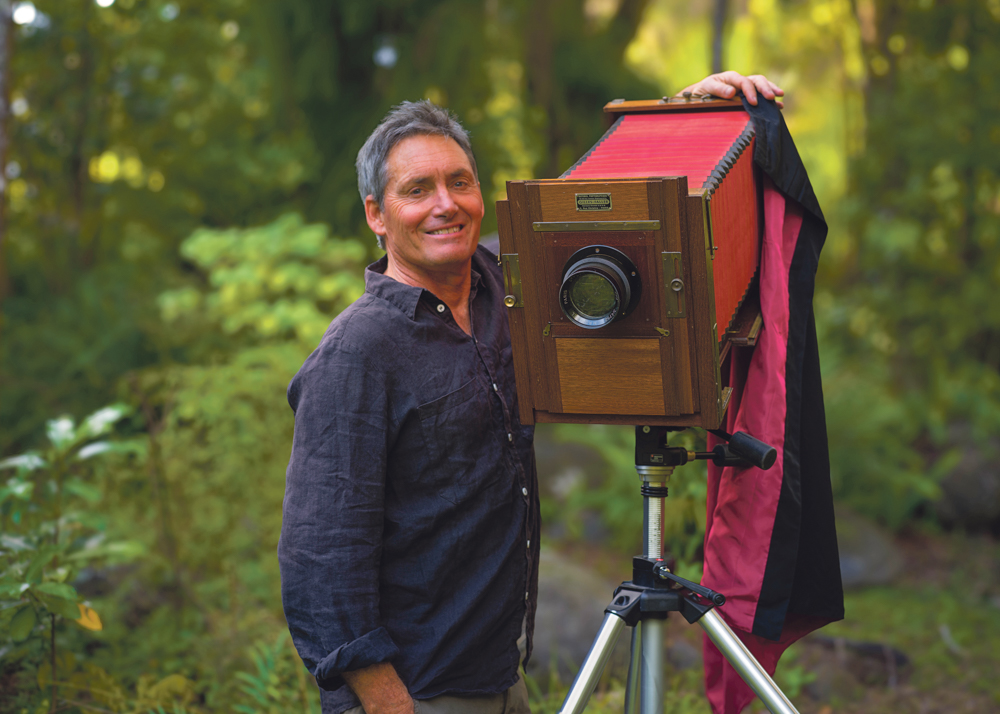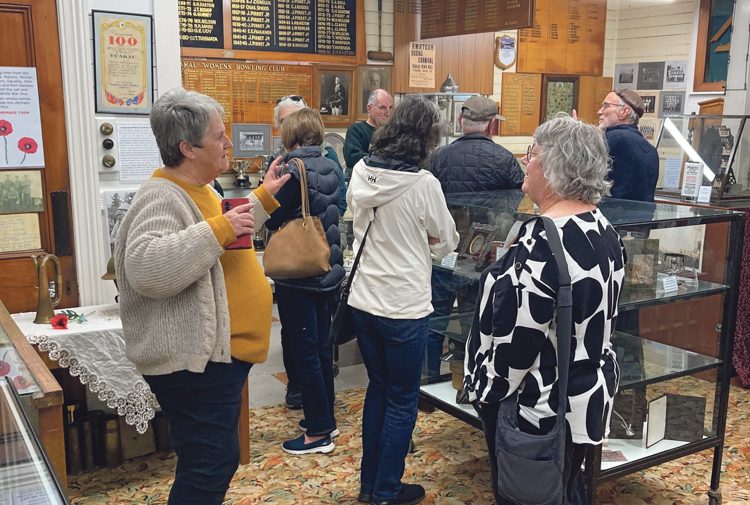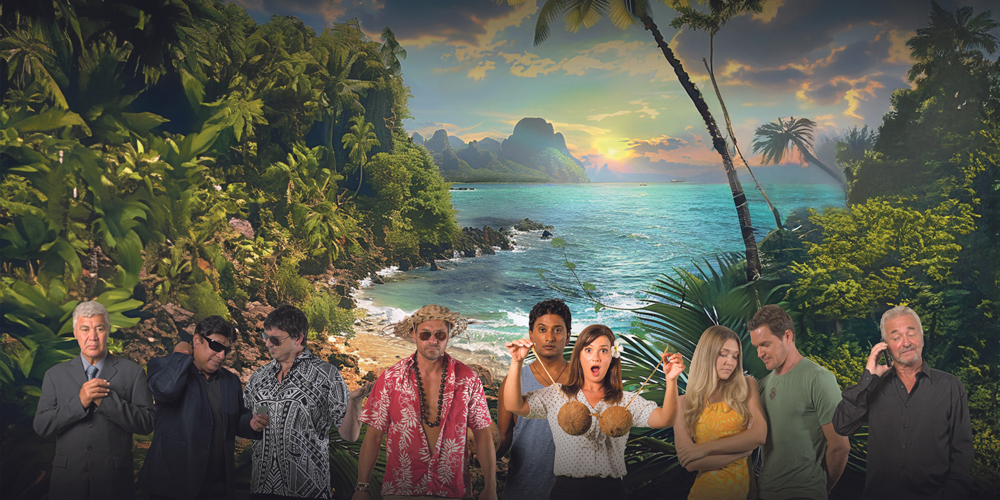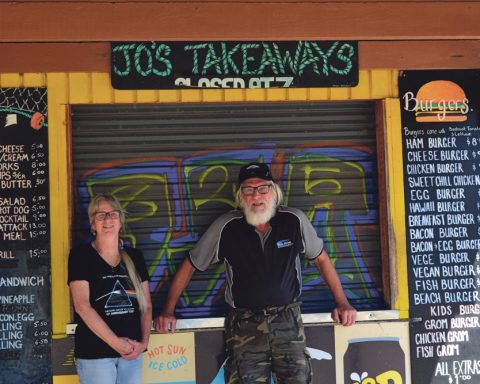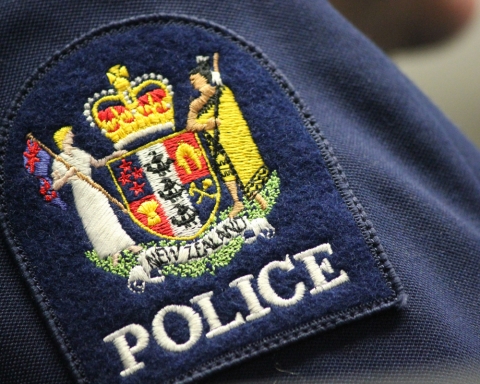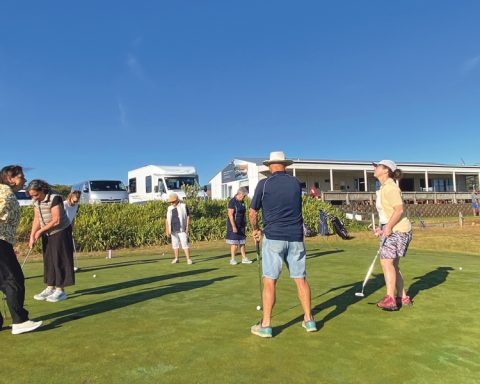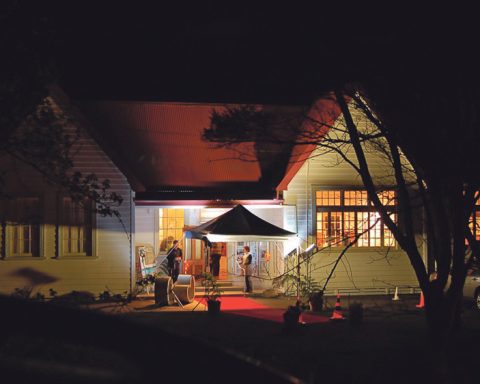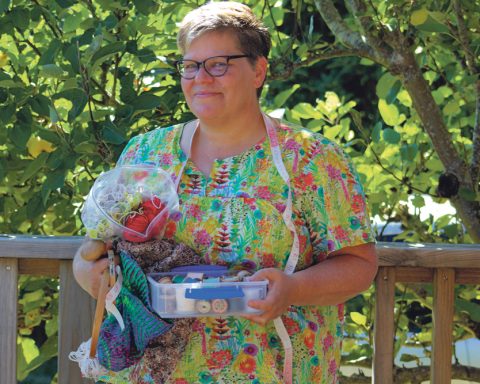Raglan architect David Loughlin is setting aside his building design tools and has focussed his sights on photography for the Raglan Arts Weekend.
He’s also taking a step back in time, using a 125-year-old plate camera to create ethereal images on black glass and acrylic.
It’s no quick point and shoot, and shoot again and again method, as with a digital camera; plate glass photography takes time, and back in the day, someone sitting for a portrait had to remain very still for several minutes.
“I’ve taken a couple of portraits at three minutes, and it’s really hard to hold a smile. You don’t realise you do lots of little micro movements when you smile,” David says.
In use from the 1850s to the 1920s, plate cameras work by exposing a glass plate, soaked with a colloidal silver emulsion, to the light when the lens cap is removed. The glass is exposed to the light for eight to ten seconds sometimes up to three-minutes.
“It’s a slow process, which I think is different to digital; you’ve really got to think about what you’re going to photograph and shoot, because you’ve only got 15 minutes from start to finish before the chemicals dry out.”
David is fascinated by the play of movement and light that can be achieved with plate glass photography.
“I really love the surprises. They can be a bit ghostly; you get these swirls which are just light. There’s movement and distortions, and the silver reacts to the light as well, so you get quite a lot of detail,” he says.
Using a plate camera is not for the faint-hearted, as David found out after a recent trip to Cape Palliser.
“I was trying to take some shots of the lighthouse. But it was so windy, the camera blew off the tripod after one shot.”
So far, most of his work has been inspired by his back yard, which was once owned by Mrs Hollinger, who was well-known for her gardening.
“It’s really is a legacy of her gardening that I’m photographing and I’m making all these discoveries about the garden, and the huge variety of plants,” he says.
While David is a newcomer to the Raglan Arts Weekend, he’s been dabbling with photography for many years and even worked as a photographer for a magazine before heading to architecture school.
“When I went travelling, I picked up a little film camera in London, and went around Spain and Portugal, taking black and white photos.”
After a first failed attempt to get into architecture school back home in New Zealand, David used his portfolio of photos from overseas to see if he could get a job as a photographer.
“I got a job photographing houses. I was probably rubbish, it was lucky there was even film in the camera,” he laughs.
A year later, David got accepted to study architecture and it’s been his career for the past 30 years.
But he never gave up on photography.
A chance meeting on a trip to Bali with an Australian amateur photographer introduced him to an online course at Melbourne University.
“That got me fired up and interested in photography again.”
He was gifted the plate camera in February from the great granddaughter of a photographer called Thomas Beale who was taking photos at the turn of last century in Te Awamutu. The gift came with the proviso that he uses the camera, and it was not to be sold.
“When I grabbed it, I thought, oh no what have I done? I had no idea what to do with it.”
A chance encounter with another plate photographer at the Creative Markets put him in touch with Brian Scadden, a master of the 19th-century art of wet plate photography living in Carterton.
“I did a one-day workshop with him and, at the end of the day, I shot about 10 plates on my camera, and I was hooked.”
He is enjoying the learning process and has been back for another session with Brian.
“I think I’m a lifelong learner, and having a deadline, like Labour Weekend (for Raglan Arts Weekend) actually speeds up learning.”
David is taking part in The Hatch Exhibition for emerging artists at the Raglan Town Hall, 26-28 October | 10am – 5pm.
by Janine Jackson
